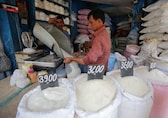Prices of almost all commodities, barring milk, poultry lead and a few others, rose in the global market in the previous week. A similar uptrend has been seen in Indian markets for steel, aluminium and other metals, with concerns being raised.
Minister for road transport and highways Nitin Gadkari has written to Prime Minister Narendra Modi, expressing concern over a 55 percent increase in steel prices in the last six months. The spike, the minister said, was making infrastructure projects unviable.
Automotive manufacturers have reacted to the recent surge in steel, aluminium, copper and precious metals such as palladium and rhodium that are used in the exhaust for controlling emissions.
How industrial metals have fared year-on-year
According to Trading Economics website, among industrial metals, copper has gained 28 percent year on years, steel 17 percent, coal 19.5 percent, palladium 22.3 percent, lead 6.5 percent, aluminium 13 percent, tin 15.5 percent, lead 6.15 percent, zinc 24.72 percent, nickel 25 percent, iron ore 75.5 percent and rhodium is up 172 percent from the previous year.
Copper prices have vaulted to an eight-year high of nearly $8,000 a tonne on the London Metal Exchange, an 80 percent rise since March 2020.
The World Bank, in its commodity market outlook in October, said prices had recovered during the July-September quarter, adding the outlook was uncertain in view of the novel coronavirus pandemic.
Some global rating agencies, too, said the price outlook was uncertain in view of the fear of a second COVID-19 wave. Despite these projections, there are five reasons that commodity prices have surged over the last few weeks.
1 The China hand
China has been one of the major reasons for the rebound in commodities prices from the lows seen in March 2020. Chinese buying has helped its manufacturing activities gather momentum.
In November, Chinese factory output hit a 20-month spurred by demand for manufactured goods and its trading partners lifting the curbs imposed to tackle the spread of COVID-19.
Financial services ING Group, in its THINK Economic and Financial Analysis, said one of the key recoveries “from behind came from China”.
China’s post-virus stimulus has led to more infrastructure investment and increasing demand for metals. Its move to ensure food security has seen it boost agricultural imports, ING said.
2 US stimulus hopes
After prolonged negotiation, lawmakers in have agreed to a deal to provide a $900 billion stimulus package. There is hope that the deal would encourage people to spend and fuel demand.
This time, the stimulus package could target the vulnerable sections of society, which could result in robust demand.
3 Renewable energy push
According to Japanese media firm Nikkei Asia, the market for materials such as copper, silver and aluminium has gained on growing demand due to a shift to renewable energy and electric vehicles.
4 Supply disruptions
Problems in the supply chain, especially due to transportation issues, have pushed commodity prices up in the face of fresh demand, experts said. Last week, rice hit a nine-year high of $500 a tonne in Vietnam and Thailand due to non-availability of containers.
5 Return of commodities as an asset class
Till October, hedge funds had invested over $4 billion in the commodities market and it was an indication that commodities were back on investors’ priority list, news agency Reuters reported, citing eVestment data.
The bull run is viewed as a turnaround in the fortunes of the commodities market after fell on hard times in 2011. Until then, commodities were a must in an investment basket, especially as prices soared and crude oil topped $100 a barrel.
The enthusiasm has returned with fund managers recommending commodities as an asset to invest in. It had lead to returns from some of the commodities funds rise to more than 10 per cent this year.
The Indian market
It has been long since the Indian markets, equities or commodities, got integrated with global markets and developments. This saw gold and silver prices in India surge to record highs in the middle of this year.
Later, steel, iron ore, copper, polymers and other commodities too zoomed. One reason was the pent up demand that followed the lockdown announced by the government to break the chain of coronavirus infection.
Automotive and agricultural implements such as tractors have been recording higher sales since June. A record number of tractors were bought in August and September.
These, in turn, led to the demand for metals such as steel, copper and aluminium. Copper prices on MCX rose to a record Rs 617.45 a kg over the last weekend.
A steel industry expert said that prices were ruling higher than the pre-COVID-19 phase.
“Steel industry is capital intensive requiring an investment of Rs 3,000 crore to produce one tonne of steel. Steel firms incurred huge losses in the first and second quarter of this year. So, the current price increase will help them recover those losses,” said the expert, who did not wish to be identified.
However, prices are based purely on demand and supply and the recovery will help prevent erosion in shareholders value. “Demand has been mainly driven by the recovery in the automotive and construction sectors,” he said.
The recovery has been facilitated by the government allowing farm activities during the lockdown, helping growers to harvest the rabi (winter) crops. In addition, it has procured key crops such as wheat to ensure better return to farmers, besides pumping in more than Rs one lakh crore in rural areas through various welfare measures.
A happy new year ahead
Reuters quoted Robert Howell, senior research strategist at Gresham Investment Management LLC, as saying that the fundamentals were in place for a new structural and bull market in commodities. Gresham, a commodities-focused unit of Nuveen, has $5.8 billion in assets invested in the sector.
ING said it expects the commodities markets to move higher as further recoveries in economies across the world would provide support and further stimulus packages were possible in countries such as the US.
It said significant growth in the money supply would see more money flowing into the commodities and speculators boosting their long position, particularly in metals and agricultural commodities.
The dollar could also weaken, providing further impetus to prices of commodities, most of which are traded in the American currency.
Jeff Currie, head of Commodities Research for Goldman Sachs Research, said in a talk on commodities market that his team was bullish about the next year as the stimulus packages would be targeted at lower-income groups.
This is because COVID-19 “is a social crisis which has shifted policies towards accommodating social needs”, he said, adding it would lead to higher consumption of commodities.
Global rating agency Fitch holds a bullish view on the overall commodities complex next year, expecting most prices to average higher compared to 2020.
Crude could outperform
Fitch said that crude oil could be among the outperforming commodities next year it was the underperformer this year due to demand destruction on account of the coronavirus outbreak.
Brent crude oil prices have slumped nearly 25 percent year-on-year, while diesel and heating oil have dropped over 20 percent each.
The outlook is mixed for industrial metals, with iron ore likely to be an underperformer since its upside from current levels is limited. Fitch said it was neutral on gold, while prices of agricultural commodities will move sideways, with most ruling below spot prices seen earlier this month.
Disclaimer: The views and investment tips expressed by experts on Moneycontrol are their own, and not those of the website or its management. Moneycontrol advises users to check with certified experts before taking any investment decisions.










_2020091018165303jzv.jpg)



























